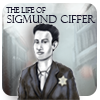Jan. 11, 2021
Holocaust Memorial Day (HMD) on 27th January is a day to remember the six million Jews murdered during the Holocaust, alongside the millions of other people killed under Nazi persecution and in subsequent genocides in Cambodia, Rwanda, Bosnia and Dafur.
‘Don’t be content in your life just to do no wrong, be prepared every day to try and do some good.’ Sir Nicholas Winton, who rescued 669 children from Nazi-occupied Europe
The theme for 2021 is Be the Light in the Darkness and is an affirmation and a call to action for everyone marking HMD. This theme asks everyone to consider different kinds of ‘darkness’, for example, identity-based persecution, misinformation, denial of justice; and different ways of ‘being the light’, for example, resistance, acts of solidarity, rescue and illuminating mistruths. The utterly unprecedented times through which we are currently living are showing the very best of which humanity is capable, but also sadly - in some of the abuse and conspiracy theories being spread on social media - the much darker side of our world.
'We will continue to do our bit for as long as we can, secure in the knowledge that others will continue to light a candle long after us. ' Gena Turgel MBE, survivor of the Holocaust (taken from the HMD Trust website)
The Holocaust Memorial Day Trust have a range of resources and ideas around the theme for this year.
At 2 Simple Software, we have produced a guide on Teaching the Holocaust. The guide is for teachers who are teaching about the Holocaust and aims to give them guidance and confidence in presenting this sensitive subject. The guide contains suggested activities, a range of pictures and personal stories that can be used with children and was compiled by Gillian Walnes Perry MBE, Co-founder and Vice President of the Anne Frank Trust UK, with thanks to the Holocaust Memorial Day Trust and to Helen Wiseman, Holocaust educator at Primary Level.
‘As a young survivor of Auschwitz, I am delighted to hear that primary school teachers in years 5 and 6 can now have the benefit of this excellent guide to teaching the Holocaust found in Purple Mash, produced by 2Simple Software. It is vital, especially in this worrying time when societies are becoming more divisive, that pupils are introduced to the lessons of the Holocaust at this critical age in their development.’ Eva Schloss (Dr Eva Schloss MBE is a survivor of Auschwitz and a renowned Holocaust educator. She is the stepdaughter of the late Mr Otto Frank, and was a childhood friend of his daughter, the diarist Anne Frank).
The teaching guide can be found in the Teacher area in Purple Mash, or can be downloaded for non-subscribers.

There is a range of resources that can be used on Holocaust Memorial Day that are mentioned in the Teacher Pack and can also be found within Purple Mash, including resources that focus on the life of Anne Frank.
The story of Sigi Ciffer is one that could be used in the lead up to Holocaust Memorial Day (this story is suitable for Year 6 students and is not recommended for children younger than this age). He tells you about his experiences in the war, how he survived and what happened to his family. This video features a short interview with Sigi.
Sigi’s story shows that the end of the Holocaust was the beginning of a new story for him. Many survivors were in a similar position; they were far from home and yearned to return. However, when they did return, they found that their family and friends were no longer there and, in most cases, had not survived. Many survivors were not treated with warmth. Antisemitism did not disappear; in many cases, Jewish people were not given back their own homes or possessions. Sigi says himself that he was accused of exaggerating his experiences and describes the pain that this caused him.

In more recent years, survivors have felt impelled to share their stories to help others learn from this time in history. We have added to our resources this year with a focus on the life of Mindu Hornick, a survivor of Auschwitz. Teachers can view five short video clips and share these with their class (it is advised that staff watch the films themselves before sharing with students). The short video clips feature Mindu explaining her early life, life in the ghetto, transport to Auschwitz, working in the ammunition factory and freedom. We have also created a series of resources that Year 6 pupils can use following on from watching the clips. Mindu’s message to children today is to value and care for each other, appreciate the freedom they have and treat everyone as equal.
Today, the Jewish community is as diverse as ever with Jewish people living in most countries in the world and practicing their religion in a huge variety of ways. The population of Jews in the countries most affected by the Holocaust is a fraction of what it was before the war. However, many synagogues have been rededicated to the study of Judaism and the events of the Holocaust. At the same time, antisemitism and racism are still a feature of society and survivors like Sigi and Mindu feel a great need to pass on to future generations their experiences of how humanity can go down a terrible path.